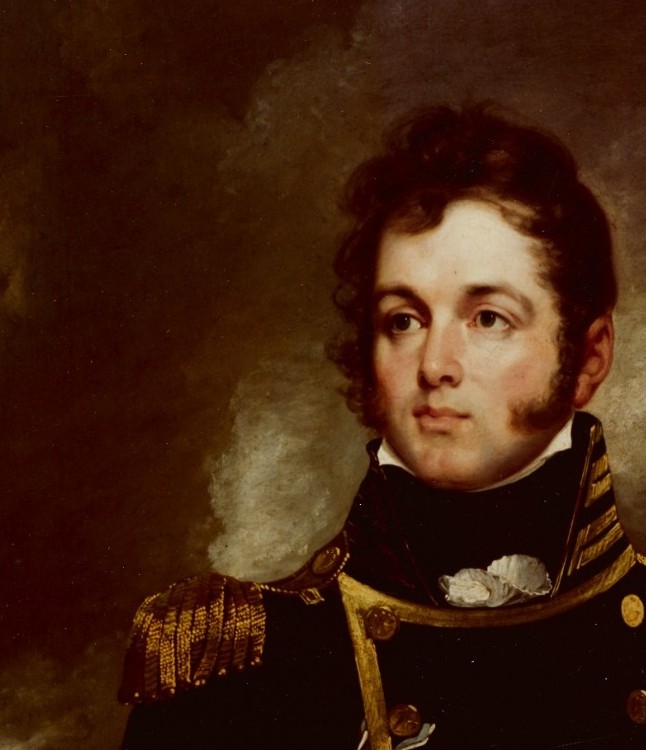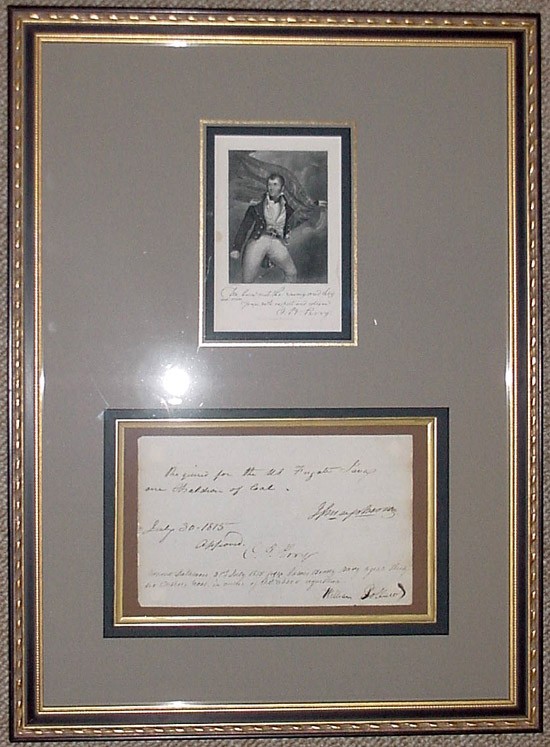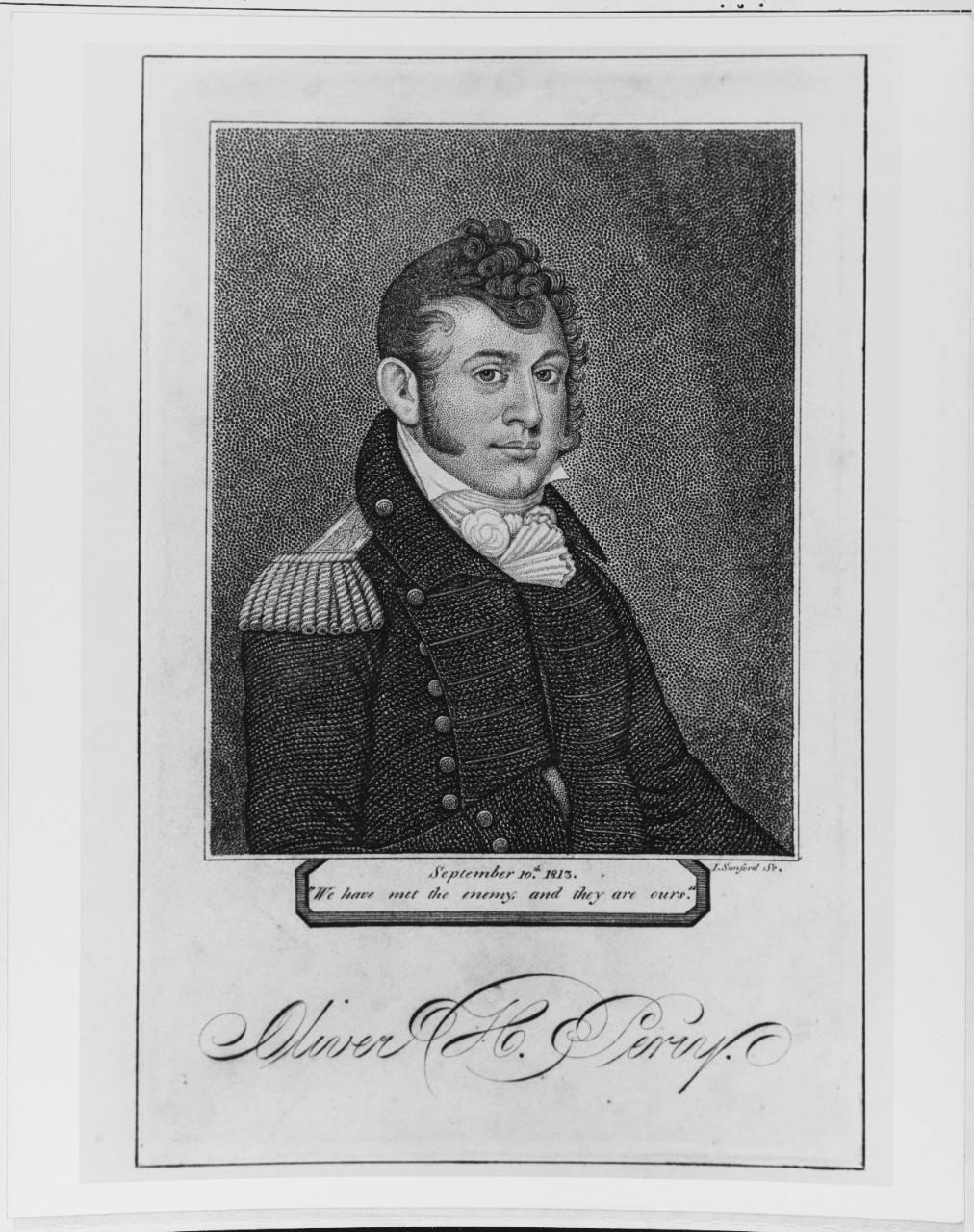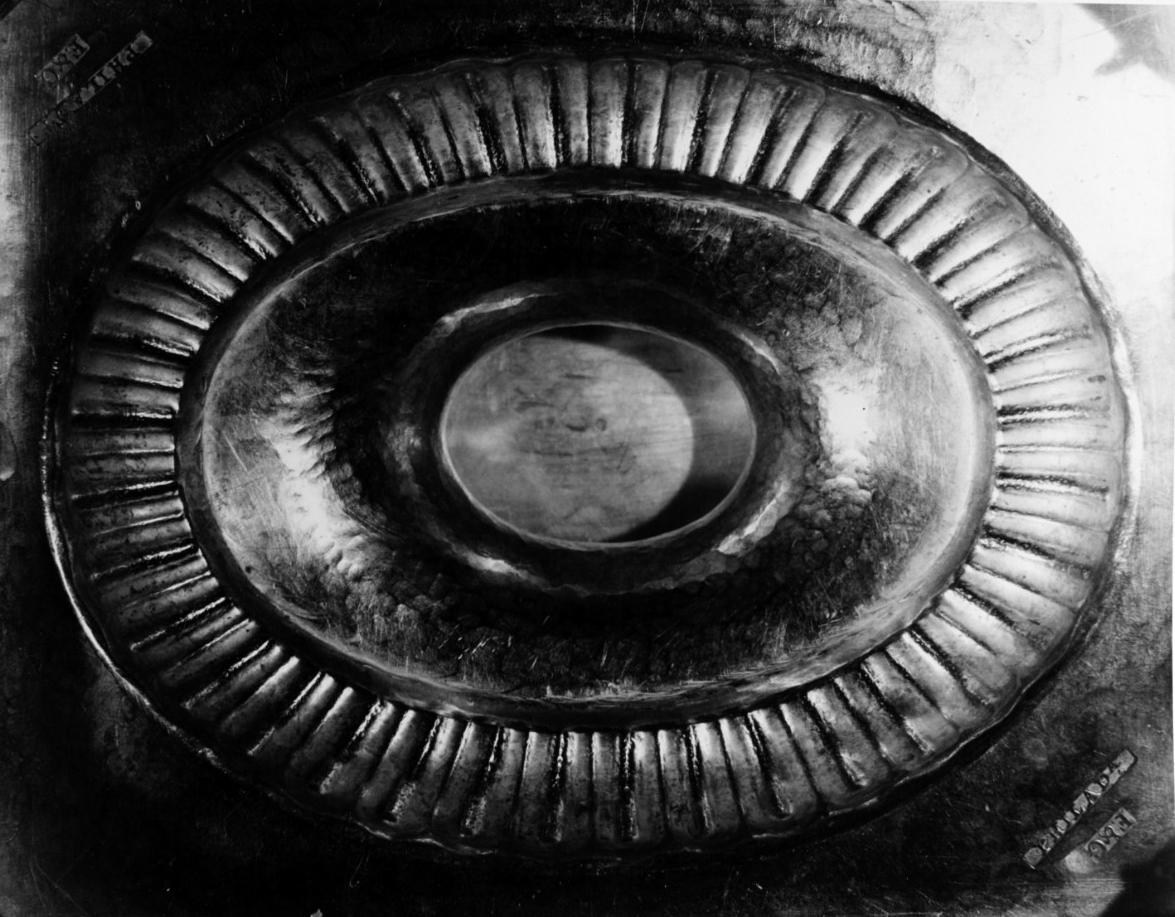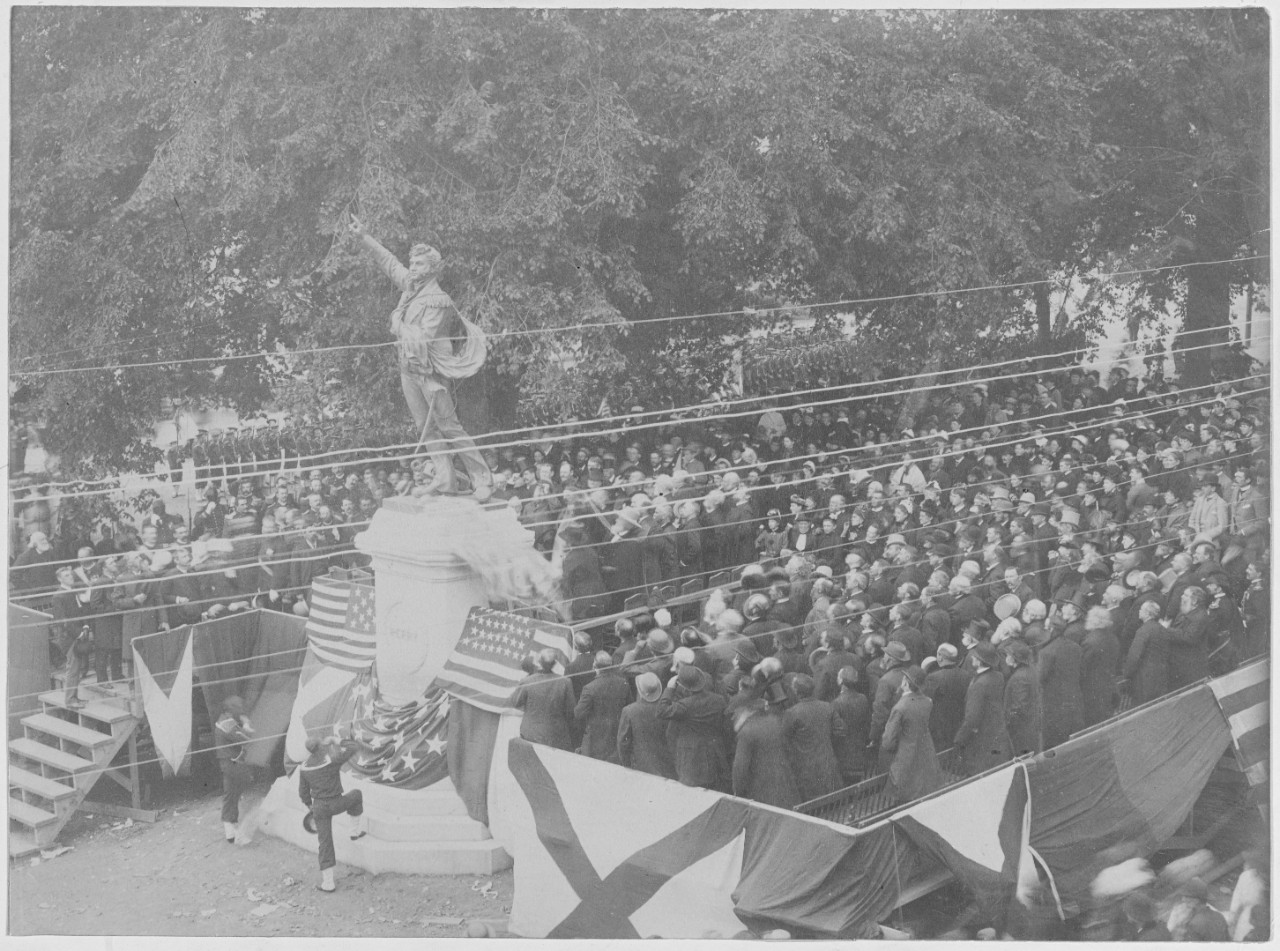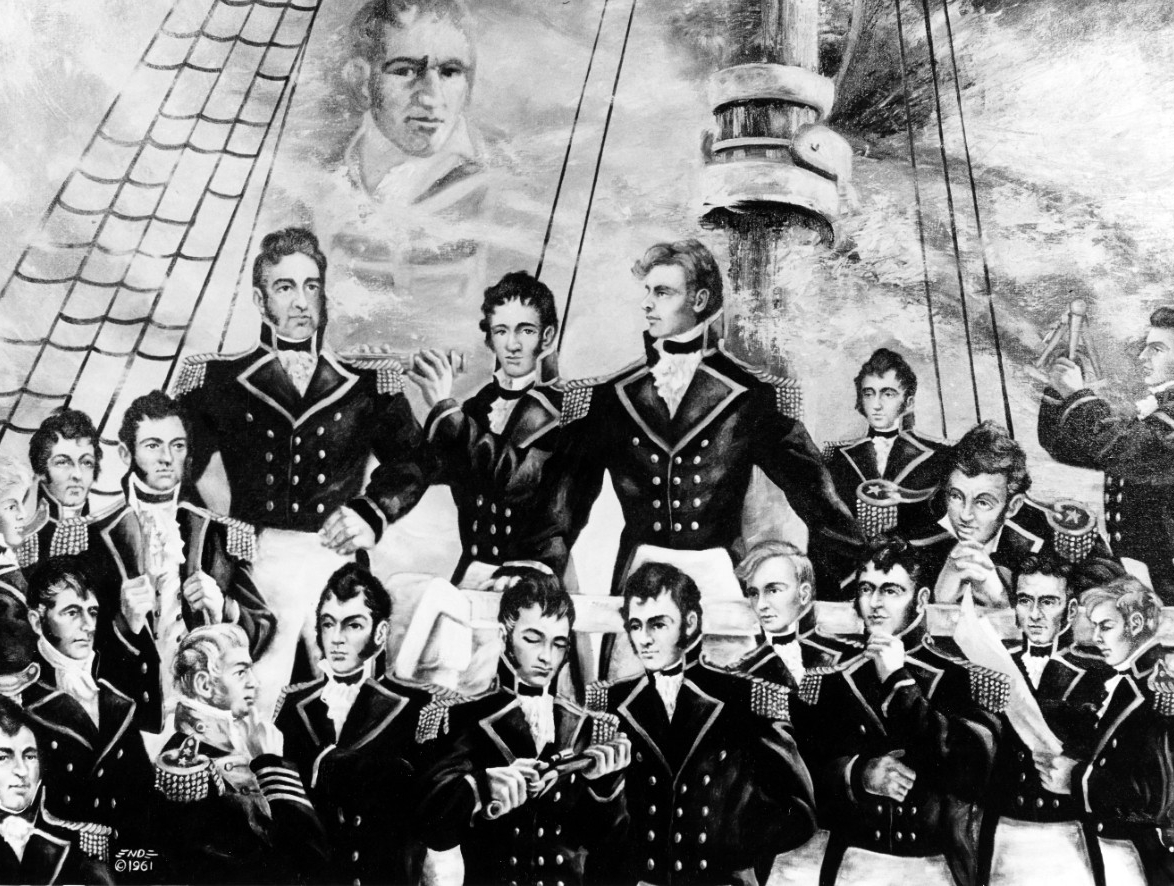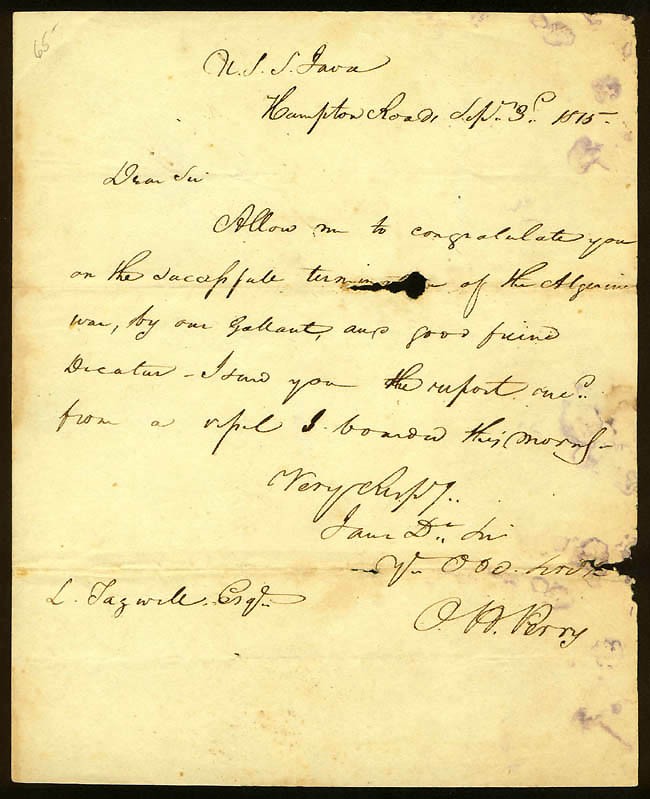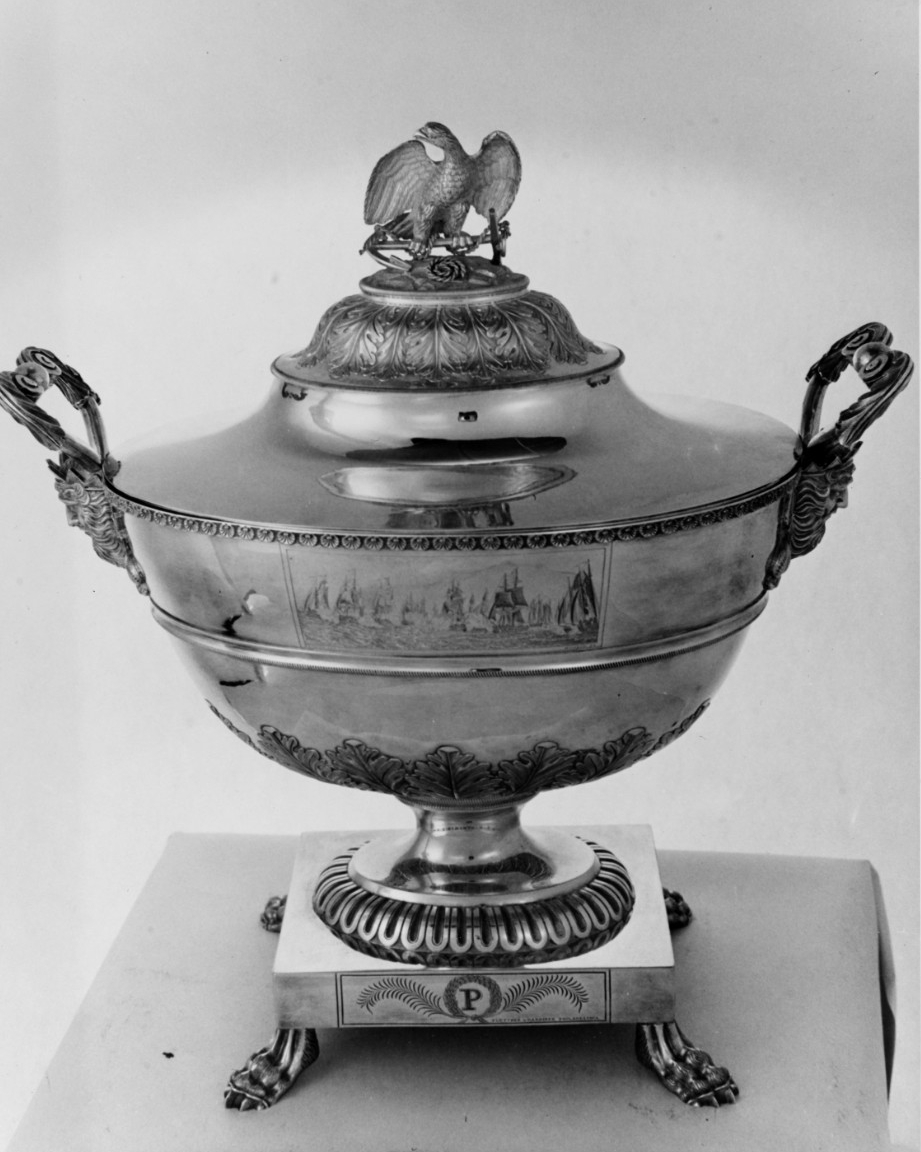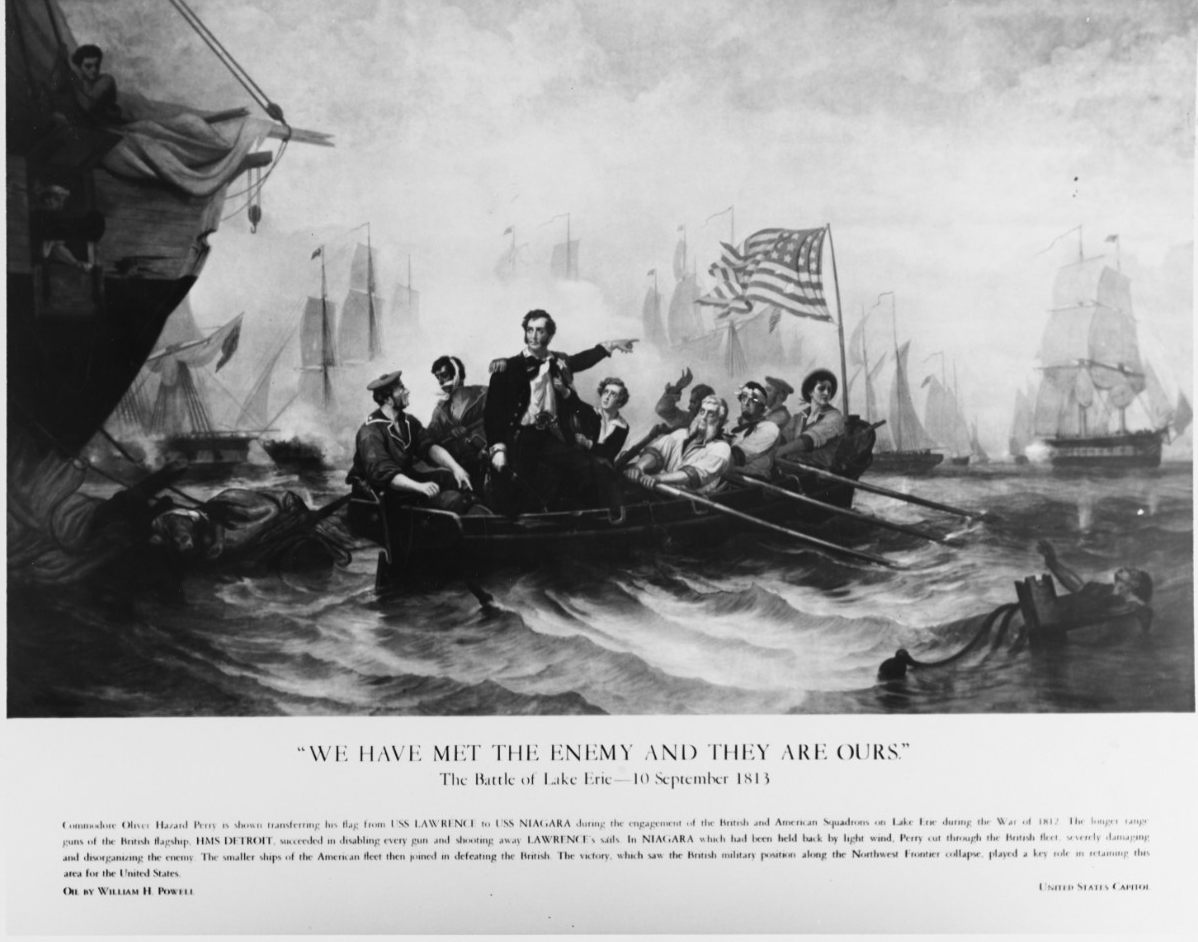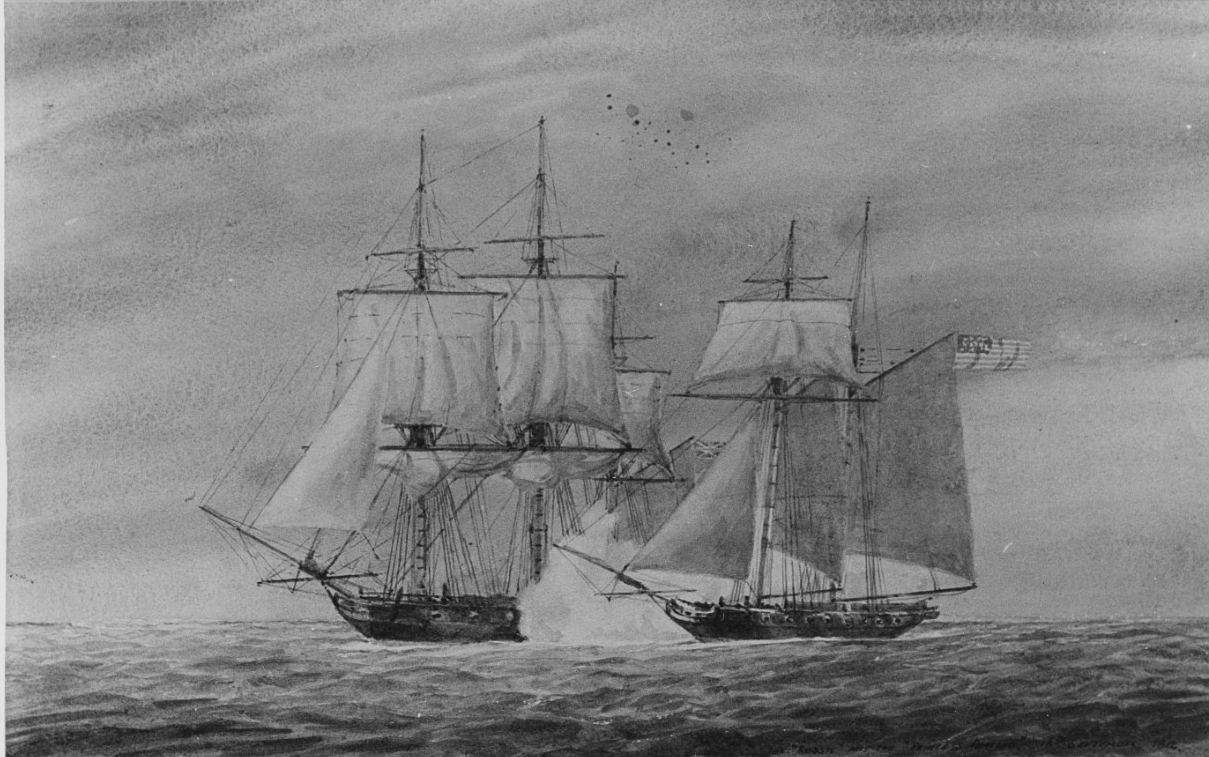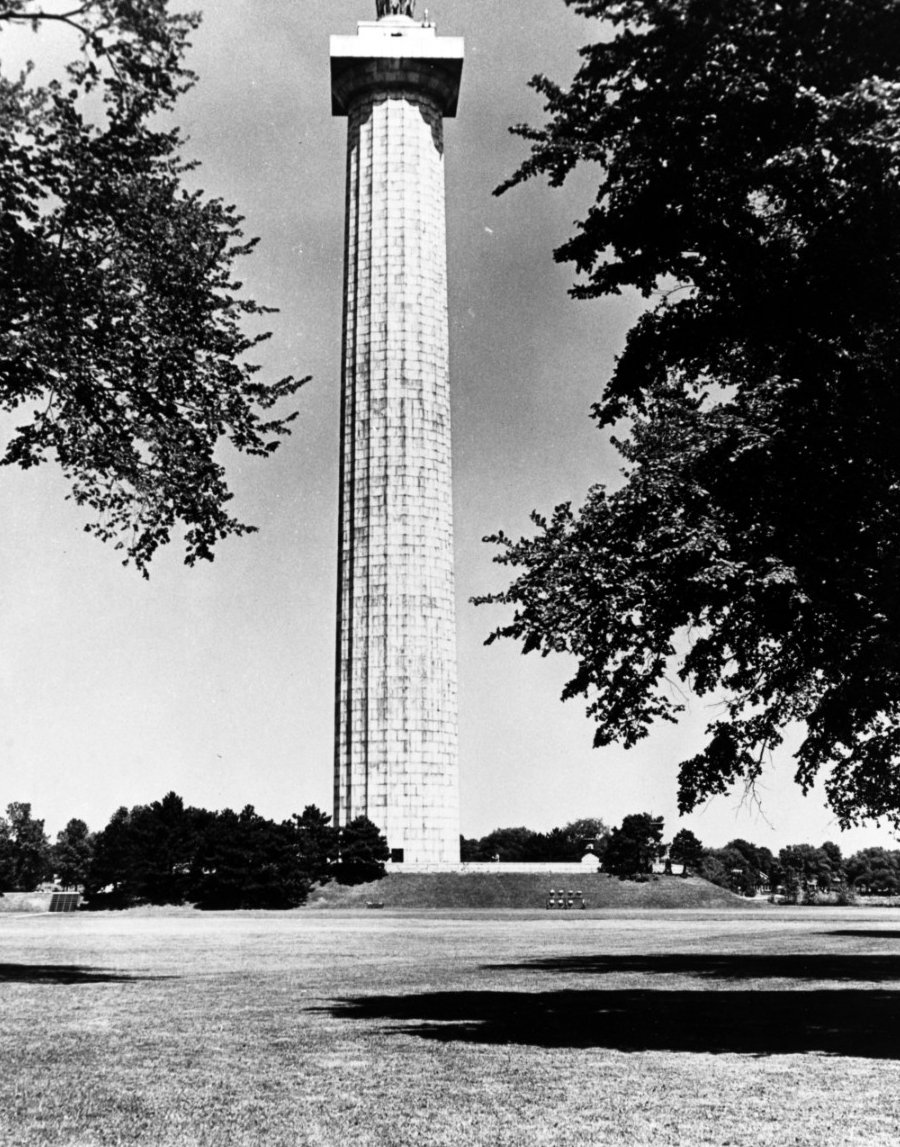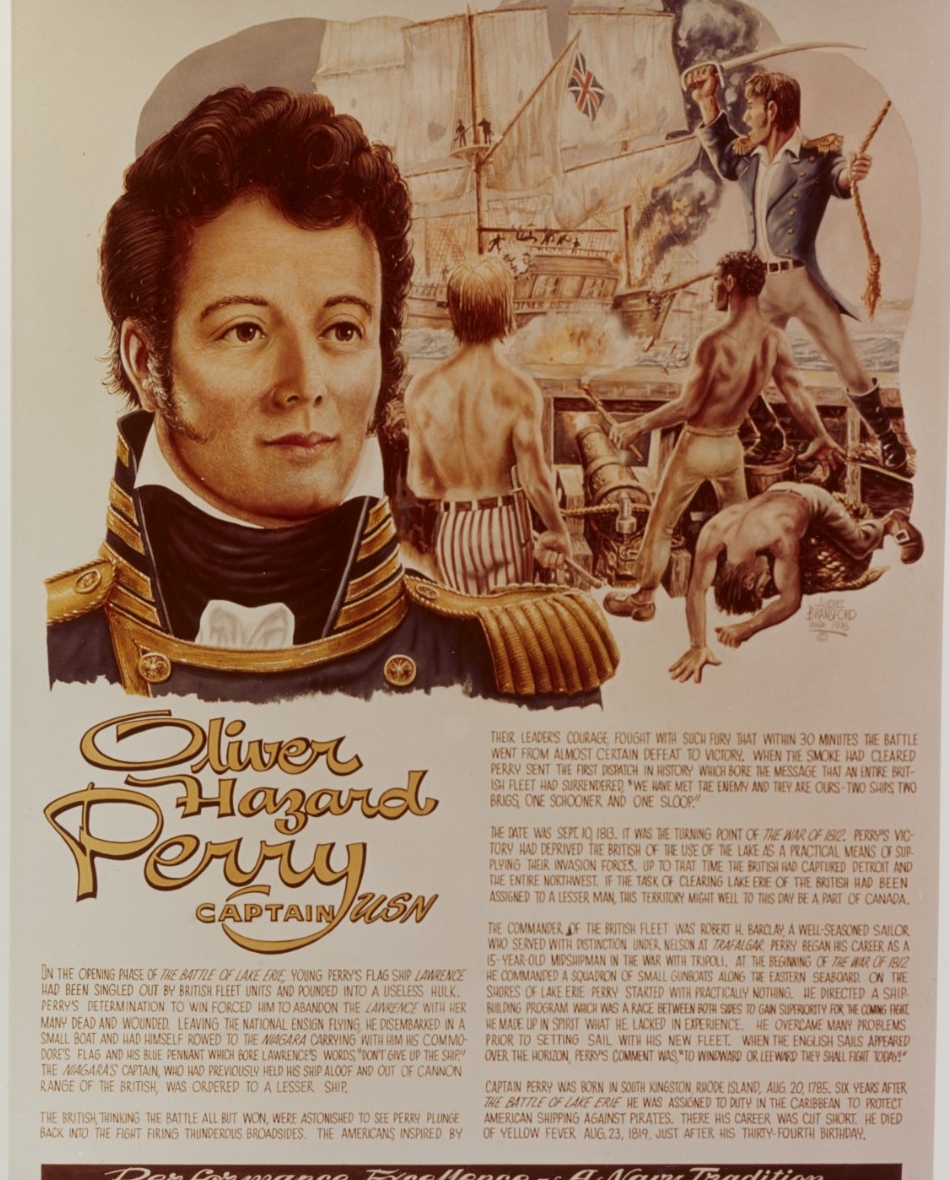Oliver Hazard Perry
23 August 1785 – 23 August 1819
The man who was to lead the Lake Erie fleet to victory during the War of 1812 was born on 23 August 1785, at South Kingstown, Rhode Island. The eldest of five sons and three daughters born to Christopher Raymond and Sarah Alexander Perry, the first son was named after his paternal grandmother's father, Oliver Hazard, and also for his uncle, Oliver Hazard Perry, who had recently been lost at sea.
Oliver Hazard Perry was warranted a midshipman in the U.S. Navy on 7 April 1799. Over the next six years, he participated in the Quasi-War with France and the Tripolitan War against the Barbary pirates. During that period, Perry served on such famous ships as Adams, Constellation, Nautilus, Essex, and Constitution, but he was not involved in any of the memorable engagements of those little known wars. After an extended leave in 1806–07, Perry superintended construction of a flotilla of small gunboats in Rhode Island and Connecticut, a duty he considered tedious, until, in April 1809, he received his first seagoing command, the 14-gun schooner Revenge.
During the summer and winter of 1809, Revenge patrolled northern waters as part of a squadron under Commodore John Rodgers. Then, in the spring of 1810, Perry's ship was ordered to the Washington Navy Yard for repairs preparatory to an assignment in southern waters. But in June 1810, while en route to Charleston, South Carolina, Revenge lost several spars and suffered considerable damage after battling a severe storm. To make matters worse, Perry was plagued by illness. Perry's unhappy tenure on Revenge abruptly ended on 8 January 1811. In the process of conducting a survey of several harbors along the southern New England coast, Revenge was sailing through the western reaches of Block Island Sound in heavy fog when the unlucky schooner struck a reef near Watch Hill Point and went down. The obligatory court-martial exonerated Perry, who blamed the vessel's loss on the hapless pilot.
After the court-martial, Perry enjoyed an extended leave of absence. On 5 May 1811, he married twenty-year-old Elizabeth Champlin Mason at Newport, Rhode Island. Eventually the union would produce five children, one of whom died in infancy.
When war with Great Britain was declared on 18 June 1812, Perry was assigned to command a squadron on tiny gunboats at Newport. Dissatisfied with what he considered an insignificant appointment, Perry petitioned the Navy Department for a posting at sea. Over the next few months, while his friends gained glory on sleek vessels like Constitution, United States, and Hornet, Perry felt that he was unfairly being left to rot in a backwater of the war, even though he received a promotion to master commandant on 6 October 1812. Perry petitioned his old friend, Isaac Chauncey, who then commanded naval operations on the Great Lakes. Perry's timing was fortuitous since Chauncey was much in need of an experienced officer for the flotilla then under construction on Lake Erie.
His subsequent successes, both constructing the fleet and winning the Battle of Lake Erie, have immortalized Oliver Hazard Perry in American naval history, as well as his message to Major General William Henry Harrison after he defeated the British, “We have met the enemy and they are ours.” Shortly after the battle, the commodore requested a transfer back to Rhode Island. In November 1813, Perry resumed duties with the gunboat flotilla at Newport; however, his promotion to captain, dated 10 September 1813, and his elevated status with the Navy Department and the country, assured that it would be a temporary assignment. In July 1814, Perry was offered a posting commensurate with his new rank, command of Java, a new 44-gun frigate under construction in Baltimore. While engaged in fitting out Java, Perry participated in the defense of both Washington and Baltimore during the late summer British invasion of the Chesapeake Bay region. Ironically, these land engagements would be Perry's swan song, peace was declared before the new captain could get his ship to sea.
Java cruised to the Mediterranean in 1815 to help quell continuing problems with the Barbary pirates. While anchored in Naples, an unseemly incident induced Perry to slap Java's Marine officer, John Heath. Perry and Heath were both court-martialed and found guilty, but they received only mild reprimands. After Java returned to home waters, Heath challenged Perry to a duel. The duel was fought on 19 October 1817, on the same field where Aaron Burr killed Alexander Hamilton. The Marine fired first from four paces and missed; honor was satisfied when Perry refused to pull the trigger.
It was during this same period that Perry found himself entangled once again with an old nemesis from Lake Erie ─ Jesse Duncan Elliott. Perry's return from the Mediterranean prompted an exchange of acrimonious letters, after which Elliott challenged Perry to a duel. Perry declined, honor notwithstanding, and instead he decided to once and for all lay this repugnant business to rest by filing formal court-martial charges against Elliott.
The Secretary of the Navy was dismayed by Perry's charges. Both officers had well placed connections, and the Secretary was all too aware of the scandal that would ensue, not to mention the divisiveness in the officer ranks engendered by a lengthy, sordid court-martial. Rather than make a decision, the Secretary abdicated responsibility and passed on the charges and relevant material directly to President James Monroe. Monroe, desiring to defuse the quarrel and unwilling to expose the Navy or the country to what he envisioned would be a deleterious encounter for all concerned, opted to suppress the whole matter. Thus ended the final opportunity to unearth the circumstances surrounding the Perry-Elliott controversy.
To placate and distract his impetuous young hero, Monroe selected Perry to preside over an important diplomatic mission to South America. Perry sailed on board the U.S. frigate John Adams in June 1819, arriving off the mouth of the Orinoco River on 15 July. From there, he transferred his flag to Nonsuch. Nonsuch would carry Perry up the Orinoco to Angostura, the capital of Venezuela, where yellow fever was said to be a problem.
Nonsuch arrived at Angostura on 27 July. Perry maintained quarters ashore during the next two-and-a-half weeks, and while the commodore managed to maintain his own health, twenty Nonsuch crewmen attracted yellow fever ─ five of whom died. With his mission successfully completed Perry rejoined Nonsuch, confident that he had escaped the fever and anxious for a quick passage back to the fresh breezes at Port of Spain, Trinidad. On the evening of Sunday, 15 August, the schooner catted its anchor and rapidly floated downstream on the Orinoco's current. Two days later, Perry woke abruptly at 4 a.m. with chills and a fever. His condition rapidly deteriorated. The crew of Nonsuch frantically pushed themselves and their vessel in an effort to reach Port of Spain, but their efforts fell short by only a few miles. At 3 p.m. on Monday, 23 August 1819 ─ on his 34th birthday ─ Oliver Hazard Perry died from yellow fever.
Additional Resources
Ships named after Oliver Hazard Perry
- Perry I (Brigantine)
- Perry II (DD-11)
- Perry III (DD-340)
- Perry IV (DD-844)
- Oliver Hazard Perry (FFG-7)
Selected Imagery (click image to learn more or to download)

